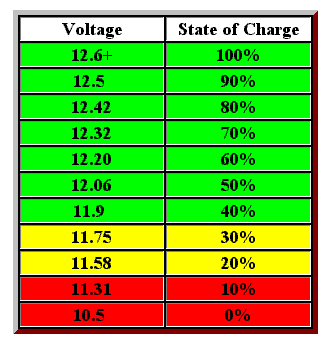1. correct.
2. absorption voltage is 14.7. quit obsessing on the word 'threshold'
3. Recharge when batteries fall to ~ 12.2v. you can of course charge at 12.4
4. You are hung up on voltage equaling a state of charge. Float voltage is when a charging source is keeping a fully charged battery, fully charged. Chargers are supposed to be smart. They are not.
5. You are hung up on voltage equalling a state of charge. This is not accurate. Voltage only can relate to state of charge when the battery has not seen any loads, or charging sources for many many many hours. As this never happens in actual use, one must divest themselves from the notion that a certain voltage absolutely equals a state of charge. Voltage can give a vague range as to state of charge when discharging, but it really helps to know the amperage load on the battery at the time, and have experience in watching the voltmeter and the ammeter as they discharge.
To know an accurate % remaining in batteries, one needs a battery monitor. these are about 200$ and require all electricity flow through a Shunt, which then counts the amps in and out of the battery, makes some calculations and will give to a %, which is about 90% accurate, and can drift over time and or be completely inaccurate if programmed incorrectly.
Using voltage as a state of charge is wildly inaccurate. It is like throwing a rock at a rubber band and judging the weight of the rock by how far the rubber band stretched.
But I fear you do not want to believe this.
I despise the above chart as it is taken as verbatim for each and every 12v battery, when they vary widely, and AGM batteries tend to old higher voltages for longer in the first 50% of discharge.
12.6+ = 100% is absolute BS. My AGM battery at a rested 12.6v is about 75%, and 12.11v rested is 50%. Note the word rested, meaning many many hours after all loads and charging sources have been removed and voltage has stabilized, and yes it takes this long and is different on each battery and the time for stabilization changes as the battery ages
Full River likely has in their documentation a voltage/state of charge graph, but please remember it is only accurate on a rested battery, one which has not seen any loads for an hour or more and one who has not seen a charging source for many many hours or more.
UNless you really want to learn more about living on battery power, all you really need to know is recharge when batteries fall to 12.2v in your regular usage, and hope your very expensive charger's preset algorithm makes your batteries somewhat happy, which is a shame as it could be programmed to 'ideal' specifications.
I fear going into any more specifics will just lead you down a dark road of confusion, and sorry to adding to your confusion by using the word 'threshold' near the word voltage once or twice.
I am not sure I can clear it up. When a battery is charged its voltage will rise. Hopefully it rises to the absorption voltage dictated by the battery manufacturer, adjusted for battery temperature. One it reaches absorption voltage it must be held there for a certain amount of time. This time is variable. When amps required to hold absorption voltage taper to a certain limit, then the threshold has been reached. The automatic charging source either holds absorption voltage for a set time period, or it uses amperage at absorption voltage to trigger float mode. 14.7v in itself is not indicative of anything. I could get my depleted battery to 14.7v in 15 seconds application of 120 amps. Does this mean the battery is fully charged. Absolutely not, it would required ~6 more hours being held at 14.7 until amps tapered to 0.4amps
Divest yourself of the notion that voltage absolutely = a certain %. Voltage = % with a 30% or larger margin for error.












































































